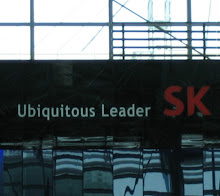Today in the PJStar: Let's Talk About the Illinois River
LaHood, Quinn thanked for Illinois River efforts
As always, it is the best of times and the worst of times on the Illinois River: the governor's biennial river conference.
On the best side, Gov. Pat Quinn and former U.S. Rep. Ray LaHood, R-Peoria, now U.S. Secretary of Transportation, complimented each other and the audience for progress made since the first conference two decades ago. On the worst, river advocates pointed out potential crises ahead.
The full title is the 2009 Governor's Conference on the Management of the Illinois River System. It kicked off with honors to Quinn and LaHood during the Illinois River Coordinating Council meeting at the Hotel Pere Marquette. In particular, they were recognized for Illinois River 2020, the conservation reserve program, national scenic byways designation, mud-to-parks projects and recent dredging for island construction.
"I intend to work with you on clean water as long as I'm governor," vowed Quinn. ". . . as long as water flows and the grass grows."
Like Quinn, LaHood noted the advances in the last 20 years, then talked about work yet to be done. He cited environmental advocates who have pushed the case, as well as efforts on a new island and farmers who have adopted soil conservation methods.
"There is no one solution to this," LaHood said. "We came together. We're making a difference. We're not finished."
That became more apparent as the meeting continued. Tom Tincher of Heartland Water Resources Council presented the worst-case scenario there, although he termed it realistic.
"I'm here this evening saying we're at a crisis point," he said. "The reality of Peoria Lake is many parts are only one foot deep."
Tincher gave evidence of pending "economic dislocation": Boats can't get out of their marinas. Hunters can't get to duck blinds. Less ability to use the river means fewer opportunities to use it economically, as well. He proposed a five-year $75 million plan to cut a secondary channel, remove and process sediment and improve habitat.
"How does this plan create new jobs?" asked Marc Miller, executive director of the Illinois Department of Natural Resources, who chaired the meeting on Quinn's behalf.
Tincher said some of the dredging on the river would need to be done by professionals, but other work along the watershed could be done by newly trained personnel.
Minutes later, Miller himself was put on defense when environmental advocates questioned placement of 90-foot utility lines, water quality threatened by a strip mine near Banner and dwindling eagle populations.
"We used to have bald eagles along the Illinois River, but we're systematically destroying their habitat," said Terry Ingram, CEO and founder of Eagle Nature Foundation.
Despite some of Ingram's more pointed comments, Miller thanked him and said IDNR needs more resources to help deal with such problems. Appointed to the job by Quinn eight months ago, he said he's found the department was held together with "baling wire, spit and a prayer."

No comments:
Post a Comment